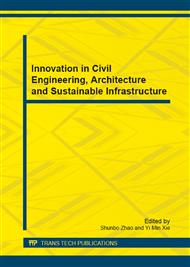p.455
p.460
p.466
p.470
p.473
p.478
p.482
p.486
p.490
Application of Thermal Priority Strategy in Energy-Saving Optimization Design of Low-Cost Rural Residence
Abstract:
In order to improve the indoor thermal environment of rural residences, on the basis of meeting the requirements of functionality, living habits and certain architectural modeling, the thermal priority strategy is put forward into the design. Aiming at the low cost, from the perspective of building layout and architectural monomer design, the thermal priority strategy is applied to energy saving design for rural residence to get the effective and reasonable comfort-type rural energy efficiency residence. Specific measures are adopted such as the selection of sunny and sheltered sites in north-south direction, the courtyard and main entrance location in south or south-east side to form the layout opening from east to west, the technical performance with low shape coefficient and energy-saving shape and taking solar radiation into account, and the reasonably settings of climate buffer layer, thermal comfort zone, plane grid, doors and windows.
Info:
Periodical:
Pages:
473-477
Citation:
Online since:
November 2012
Authors:
Price:
Сopyright:
© 2012 Trans Tech Publications Ltd. All Rights Reserved
Share:
Citation:


